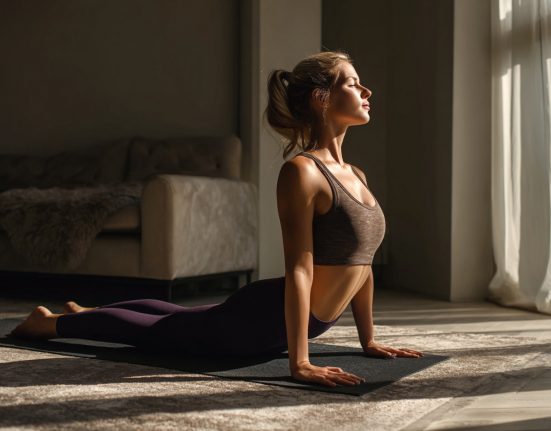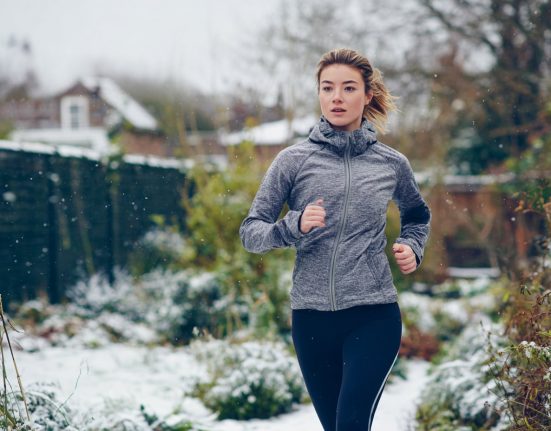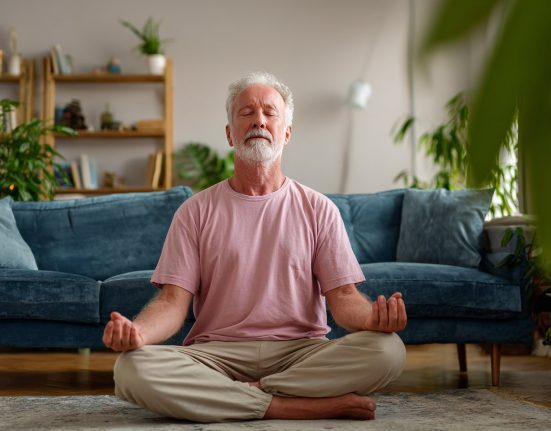The mind and the endocrine system are closely linked. With regular practice of asanas and yogic postures, much tension can be managed as they impact the endocrine system in a balanced way, says yoga guru Kamini Bobde
Emotional upheavals due to loss of a loved one, a relationship gone bad, divorce, loss of a job, financial loss, sexual abuse and marital violence are some of the commonly known turmoils in life which can cause emotional trauma impacting both the physical, emotional and mental health of a person.
A prevailing myth about emotions is that there is nothing we can do about them. Most people feel they are like tiny boats on a vast sea of emotions being tossed around by situations, events beyond their control. However, Norman E Rosenthal, psychiatrist and researcher, writes, the more we learn about emotions, we realise how we can alter troublesome emotions and develop healthy ones.
Yet another researcher, James Laird from Clark University, has found that asking students to assume facial expressions associated with subtle smiling or frowning made them happier or angrier. If such a simple subtle difference as a facial expression can influence the state of one’s mind, then how much more powerful yogic postures which work on the endocrine and limbic system can alter the emotional state of a person. For one’s state of mind is like a simple equation with the right balance between body and mind being equal to a peaceful state of mind. Asanas are the body part of the equation and pranayama and pratyahara are the mind end of the equation.
Emotional trauma usually results in breakdown of the brain to handle the onslaught of demands made on the limbic system within the brain. This is connected to the endocrine and the autonomic nervous system, which is said to manage the body’s response to stress and trauma.
So how does yoga help in managing emotional trauma in life? It was Sage Kapila who gave us the Samkhya system. The Bhagavad Gita and Maharshi Patanjali’s yoga sutras drawing from the Sandhya system defined yoga as the science of mental control which affects the various dimensions of a person’s personality and patterns of behaviour.
Asanas: It has been established scientifically that asanas and yogic postures bring about harmony between body and mind. To understand this, we must know how the mind and body complement each other. If you worry too much, get angry, think too much, are self-conscious, these lead to hyperactivity of your endocrine system. It is well- known that the endocrine system impacts on the physical and mental behaviour of a person. These glands include thyroid, pituitary, pineal, pancreas, etc.
The mind and the endocrine system are closely linked. With regular practice of asanas and yogic postures, much tension can be managed as they manage the endocrine system in a balanced way. The simple practice of two asanas, namely Paschimottana asana and Dhanurasana, can result in muscular and mental relaxation.
Paschimottana asana: In the Hatha Yoga, Pradipika it is simply described as, “Stretching the legs (in front) on the ground, like a stick, bending forward, holding the toes with both hands and placing the forehead on the knees.”
This asana stretches the whole spinal column and the central nervous system, thus enabling nervous and pranic impulses to pass directly up to the higher centres of the brain. When there is a lot of tension in the body and mind, paschimottan asana helps remove it by regulating the adrenal glands, and both blood and panic impulses, flowing into the brain.
Dhanurasana: It is an asana in which lying flat on the floor on the stomach, the ankles are clutched by both hands and then the whole body is drawn like a bow, hence its name. It is useful in overcoming lethargy and sluggishness in mind and body. It directly affects the solar plexus at the navel, which is a large sympathetic nervous centre, so important for healthy functioning of organs of the body. It is particularly good for relieving tension because various endocrinal glands are massaged and toned, notably the thyroid and the adrenals. It removes tiredness for cortisone is secreted to give the required lift or if you are overactive the secretion of cortisone is reduced, so that the body attains balance.
But it is most important to bear in mind that asanas should be learnt from a proficient yoga guru and should be performed with full mental awareness and correct breathing pattern. Awareness of every part of the body participating in the movements is of supreme importance in yoga. These asanas remove the tension which gets accumulated in the muscle in the course of the day.
Pranayama: It is a system of breathing exercises which help in expelling maximum amount of carbon dioxide from the body and ensures a good supply of oxygen to the brain and body.
But, as the yogis have said, one should not mistake pranayama merely as breathing exercise. It does improve oxygen in the body and expels carbon dioxide which has its own benefits physiologically. But as Swami Satyananda has said, “Pranayama actually utilises the breathing process as a means to manipulate all forms of prana within the human framework whether gross or subtle. This in turn has repercussions on the mind and body. Mind is the master of the senses and the breath is the master of the mind.”( Hatha-Yoga Pradipika 4:29). Therefore, breath awareness stills the mind, helps your awareness to turn inwards as one watches with eyes closed and an inward gaze, the movement of breath within our body. It helps in warding off thoughts which relaxes the mind and therefore smoothens out tensions in the mind and body.
For those who are suffering from over-anxiety, anger etc, the following Pranayama will help:
1. Anulom Vilom: Alternate nostril breathing with counting of the length of the inhalation and exhalation by counting to the rhythm of seconds. Try to keep increasing your capacity slowly. Say you start with five seconds of inhalation and exhalation, then keep increasing and try to take it up to 24 seconds over a period of time. Do five rounds.
2. Ujjai pranayama: Sitting in any meditation pose, tighten your neck area ever so slightly like you would do when you want to whisper, then breathe in and breathe out with awareness inside the throat feeling the passage of breath inside the throat area and hearing your breath like mild snoring. Do five rounds.
3. Brahmari Pranayama: While sitting in any meditation pose, you plug your ears with a finger, inhale deep, then as you exhale, chant Om, with a short A, U and a prolonged last syllable, M, generating vibrations inside your head. Do five rounds.
Pratyahara: Among the eight limbs of the Patajali’s Yoga sutras, Pratyahara is the fifth limb. The first four, Yama social codes), Niyam (personal codes), asana and Pranayama are called the Bahiranga (external practices). Pratyahara is the transition from Bahiranga to Antaranga (internal practice), as a practitioner progresses to the last three stages, Dharana ( concentration), Dhyana (meditation) and finally Samadhi. Pranayama followed by Pratyahara is a potent combination for calming all tense nerves, muscles and knots of tension within oneself. All this will remain a whole lot of words unless one actually practises and experiences the wonderful benefits of yoga.








